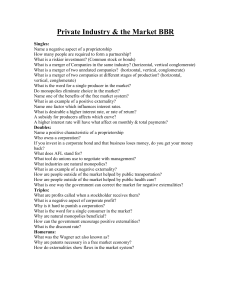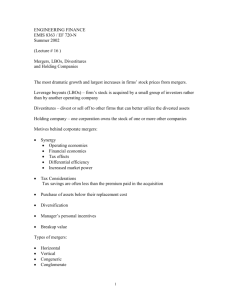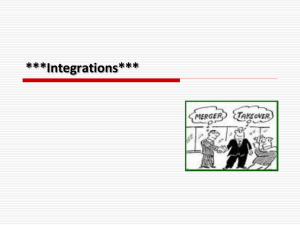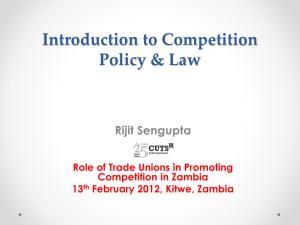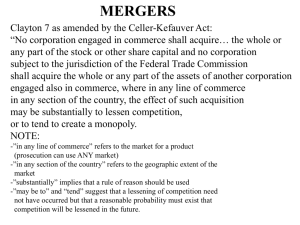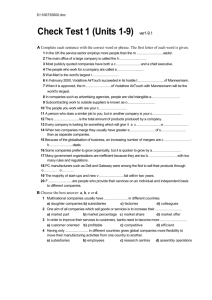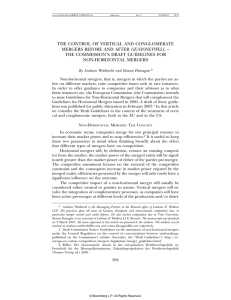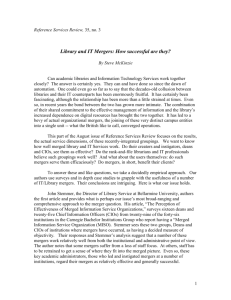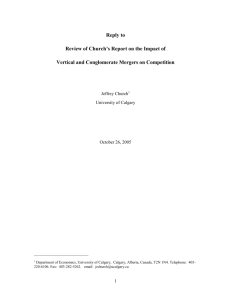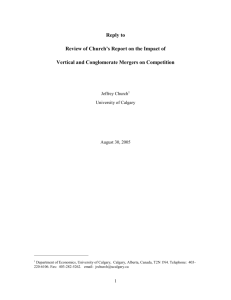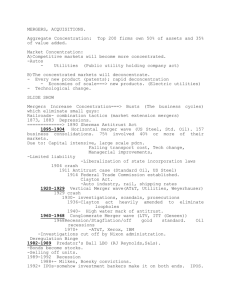ECO/365 Version 4 Principles of Microeconomics
advertisement
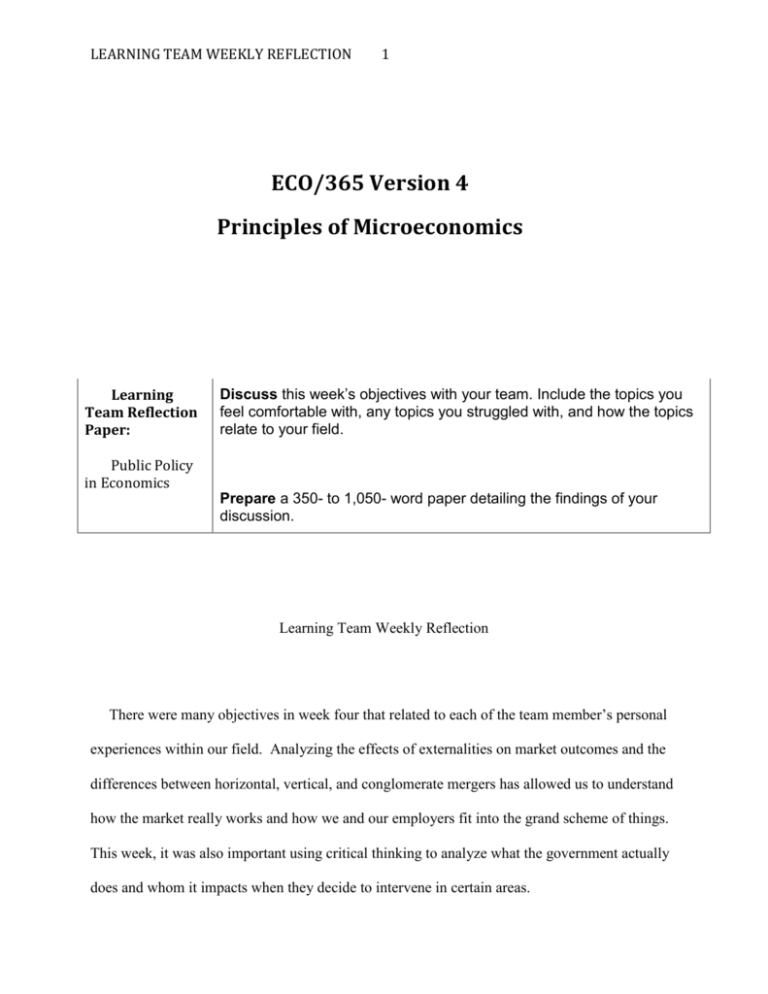
LEARNING TEAM WEEKLY REFLECTION 1 ECO/365 Version 4 Principles of Microeconomics Learning Team Reflection Paper: Discuss this week’s objectives with your team. Include the topics you feel comfortable with, any topics you struggled with, and how the topics relate to your field. Public Policy in Economics Prepare a 350- to 1,050- word paper detailing the findings of your discussion. Learning Team Weekly Reflection There were many objectives in week four that related to each of the team member’s personal experiences within our field. Analyzing the effects of externalities on market outcomes and the differences between horizontal, vertical, and conglomerate mergers has allowed us to understand how the market really works and how we and our employers fit into the grand scheme of things. This week, it was also important using critical thinking to analyze what the government actually does and whom it impacts when they decide to intervene in certain areas. LEARNING TEAM WEEKLY REFLECTION 2 Effect of Externalities In understanding externalities, the team was able to understand the positive and negative impacts associated with externalities. Theses impacts are factors that are a result of agreements by two parties without consideration of the effects of a third party. The book used a good example in referencing the positive impact of furthering one’s education and the environmental impact pollution has on society. The federal government has an active role in the overall economy. It uses fiscal policy to assist in guiding the economy from a recession or inflation. With implementing expansionary or contractual policies, government spending is either increased or decreased along with an increase or decrease in taxes. As a result of government intervention, it can cause the nation to run a deficit or have a surplus. Horizontal, Vertical, and Conglomerate Mergers There are three different types of mergers. They are horizontal mergers, vertical mergers, and conglomerate mergers. A horizontal merger is the combination of two companies that are in the same industry. When it comes to horizontal merging the Justice Department must review all merges. They have to look at the merge and see if there would still be enough competition after the merge to keep prices at a competitive level. If there would not be enough competition it would create a monopoly. A vertical merger is when there is a combination of two companies that are at different areas of the same industry. An example would be if a clothing manufacturer were to buy a retail store that sells clothes. The Justice department looks at all mergers and decides if the company would gain too many in shares if they merged. The constrictions have lessened since the 1980’s. Conglomerate mergers are when companies merge when they have relatively unrelated business. A lot of times companies will do these merges for a good buy or to ward off a take-over bid. The reason for the merge or how the merge happens does not matter if LEARNING TEAM WEEKLY REFLECTION 3 it means they own too much of the market the merge will be denied. The company I work for has created several businesses to supply needs of the parent company. An advertising agency, a construction company and a property leasing company are a few of the developed companies. These companies were not acquired through a merger but created to make the parent company more efficient. Effect of Governement Interventions, Taxation, and Regulations This week was helpful to understand the many factors that impact the economy and the changes in business that could be influenced by critical thinking decisions. Minimum wages was one of the topics discussed that had many influences toward product pricing of businesses. It is important to understand these concepts and understand the political decisions that may influence the strengths of companies whether they are massive or small. Understanding the negative impacts and comparisons between companies can also help individuals understand the weaknesses that may cause failure to the growth and structure. Some of the factors given in the material for this week have proven severe consequences to past businesses. These factors are very “eye-opening” when discussing the factors that could cause businesses to be put out of business or lose substantial returns on the investment. In closing, the team did not feel that this weeks objectives were very complicated and we all got a decent grasp on the information. It became clear seeing how these factors could cause struggles to our current or future employers. The information given this week was very straightforward to understand the ramifications of decisions made in an informal manner. LEARNING TEAM WEEKLY REFLECTION 4 References: Colander, D. C. (2010).Economics (8th ed.). New York, NY: McGraw-Hill.



